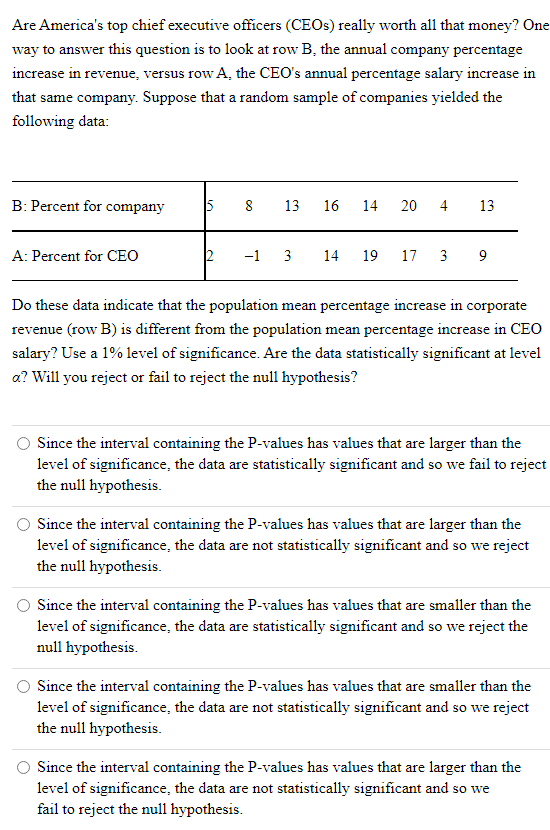Do these data indicate that the population mean percentage increase in corporate revenue (row B) is different from the population mean percentage increase in CEO salary? Use a 1% level of significance. Are the data statistically significant at level a? Will you reject or fail to reject the null hypothesis?
Contingency Table
A contingency table can be defined as the visual representation of the relationship between two or more categorical variables that can be evaluated and registered. It is a categorical version of the scatterplot, which is used to investigate the linear relationship between two variables. A contingency table is indeed a type of frequency distribution table that displays two variables at the same time.
Binomial Distribution
Binomial is an algebraic expression of the sum or the difference of two terms. Before knowing about binomial distribution, we must know about the binomial theorem.
Are America's top chief executive officers (CEOs) really worth all that money? One way to answer this question is to look at row B, the annual company percentage increase in revenue, versus row A, the CEO's annual percentage salary increase in that same company. Suppose that a random sample of companies yielded the following data:

Trending now
This is a popular solution!
Step by step
Solved in 2 steps with 1 images






